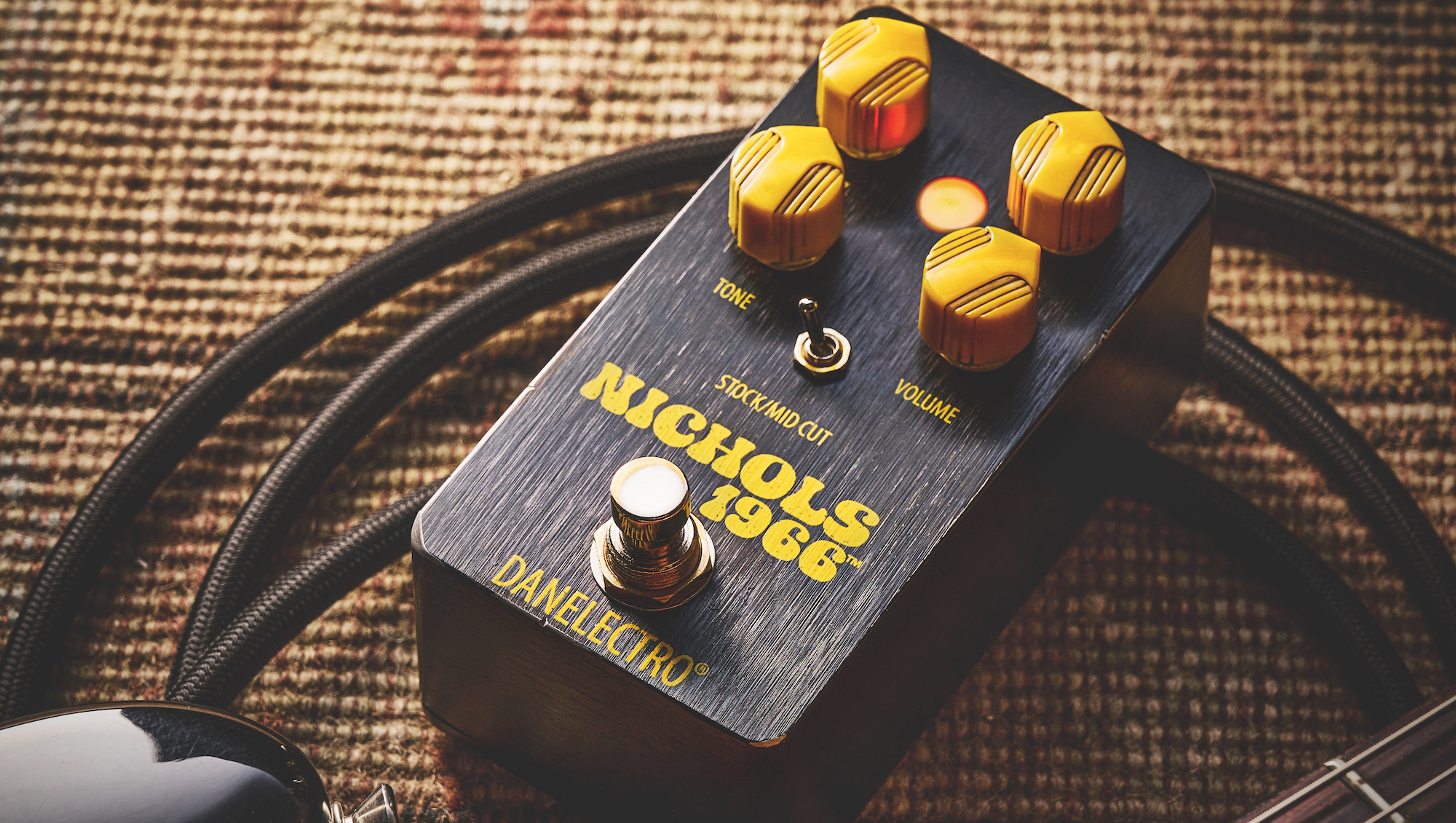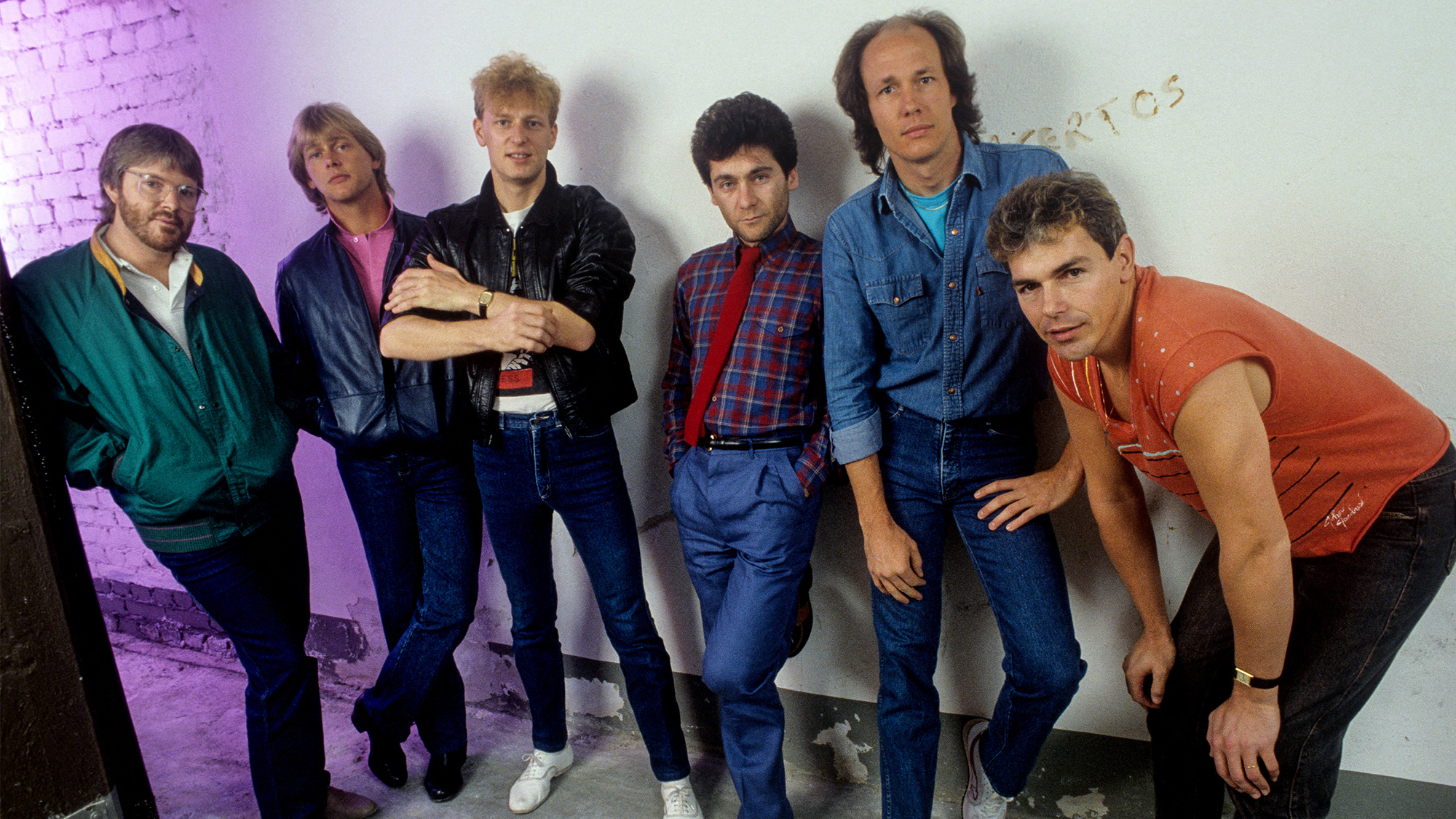GuitarPlayer Verdict
The Nichols 1966 is a satisfying pedal that’s loaded with cool distortion textures, is a blast to play, and kind of inspiring in how it’s rooted in a place and time when the availability of grind pedals was limited
Pros
- +
Interactive controls
- +
Doesn’t impart the midrange coloration you get from some classic ODs
Cons
- -
No provision for battery power
You can trust Guitar Player.
This new Danelectro pedal has the distinction of being a reissue of a stompbox that company owner and Foxx founder Steve Ridinger designed and started making at his home in Nichols Canyon Place in Hollywood, when he was just 14.
Ridinger says he built the first five or six pedals – which featured a circuit that wasn’t a clone of anything and produced a sound midway between distortion and fuzz – and then found a guy nearby to build the rest of the pedals. Ridinger went on to sell some 3,000 of them – while he was still in high school!
The Nichols 1966 squeezes a lot into a compact format, wielding controls for fuzz, drive, tone, and volume, all topped with Deco-style “arrow” knobs that look like they’re from an old Bakelite table radio. There’s also a mini-toggle with Stock and Mid Cut settings. The former provides the full range sound of the original circuit, while the latter delivers a slightly slimmer response that’s more scooped in the mids.
Within its black, die-cast aluminum housing, the Nichols’ circuity is laid out on interconnected PCBs and features discrete NOS silicon transistors, which, unfortunately, you can’t fully appreciate because only the back sides of the boards are viewable. The true-bypass footswitch is a mechanical type, and there are front-mounted jacks for input, output, and nine-volt DC power. Battery juice isn’t an option, nor is an AC/DC adapter included.
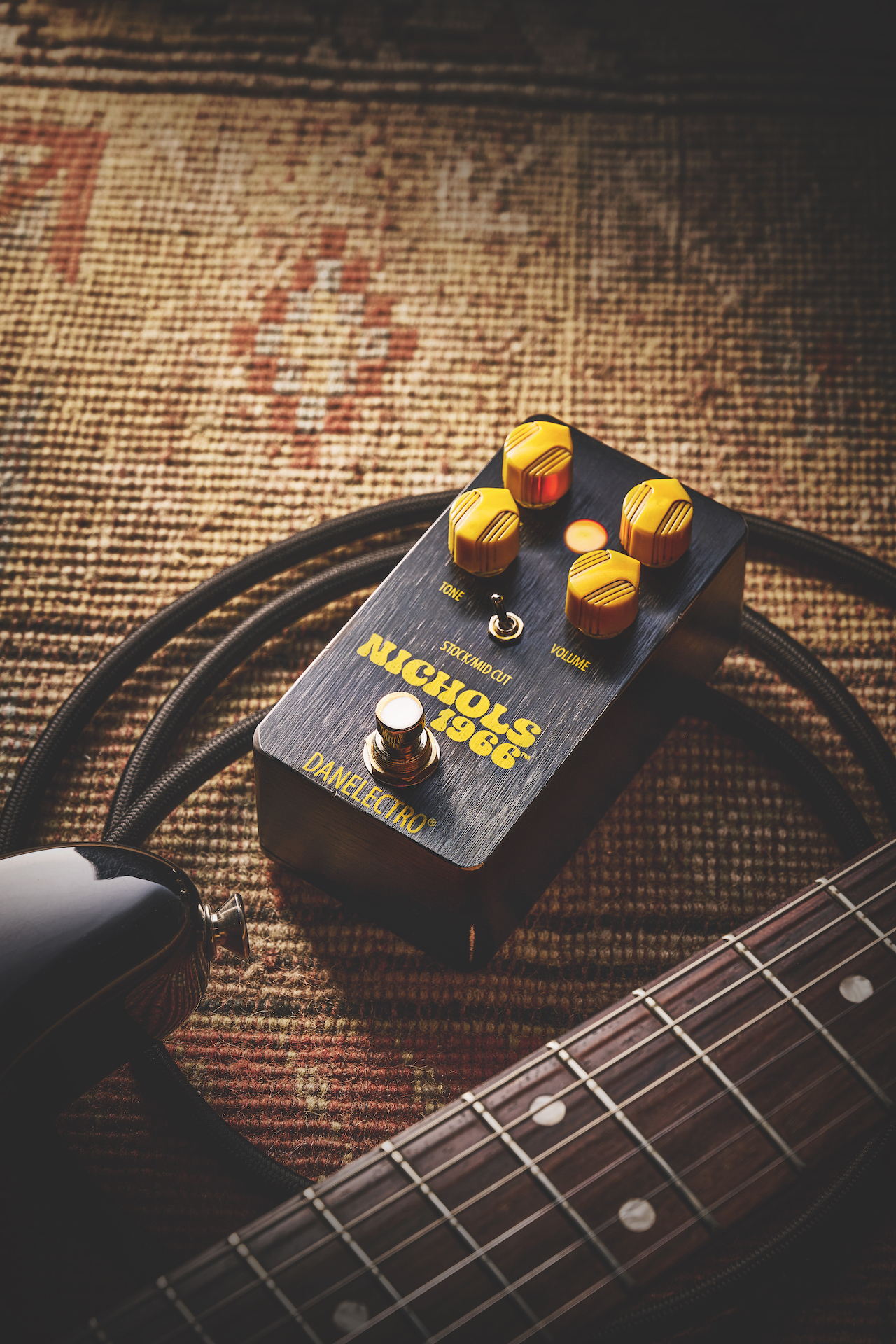
I tested the Nichols 1966 with a Fender 70th Anniversary HHS Strat Ultra, a Knaggs SSC-J, and a PRS Dustie Waring Signature, using a Fender Deluxe Reverb and a ’72 Marshall 50-watt head running into a OX Top Box and out to a 2x12 cab loaded with Alessandro SC64 12-inch speakers.
The Nichols 1966 proved a fun pedal that dishes out tones that marry fuzz and rounder overdrive textures, depending on how you position the knobs. The controls are quite interactive, and for that reason they offer lots of latitude for concocting sounds suitable for different guitars and amps.
And then there’s the aforementioned voicing switch, which helps fatten things up and get a raw and explosive distortion tone in the Stock setting, or deliver a more modern response with hollower mids when Mid Cut is engaged, which is great with humbuckers. The bottom end remains pretty consistent on either setting, but the character and feel changes enough that I found myself wanting to be able to foot-switch between Stock and Mid Cut for an even more expressive playing experience.
All the latest guitar news, interviews, lessons, reviews, deals and more, direct to your inbox!
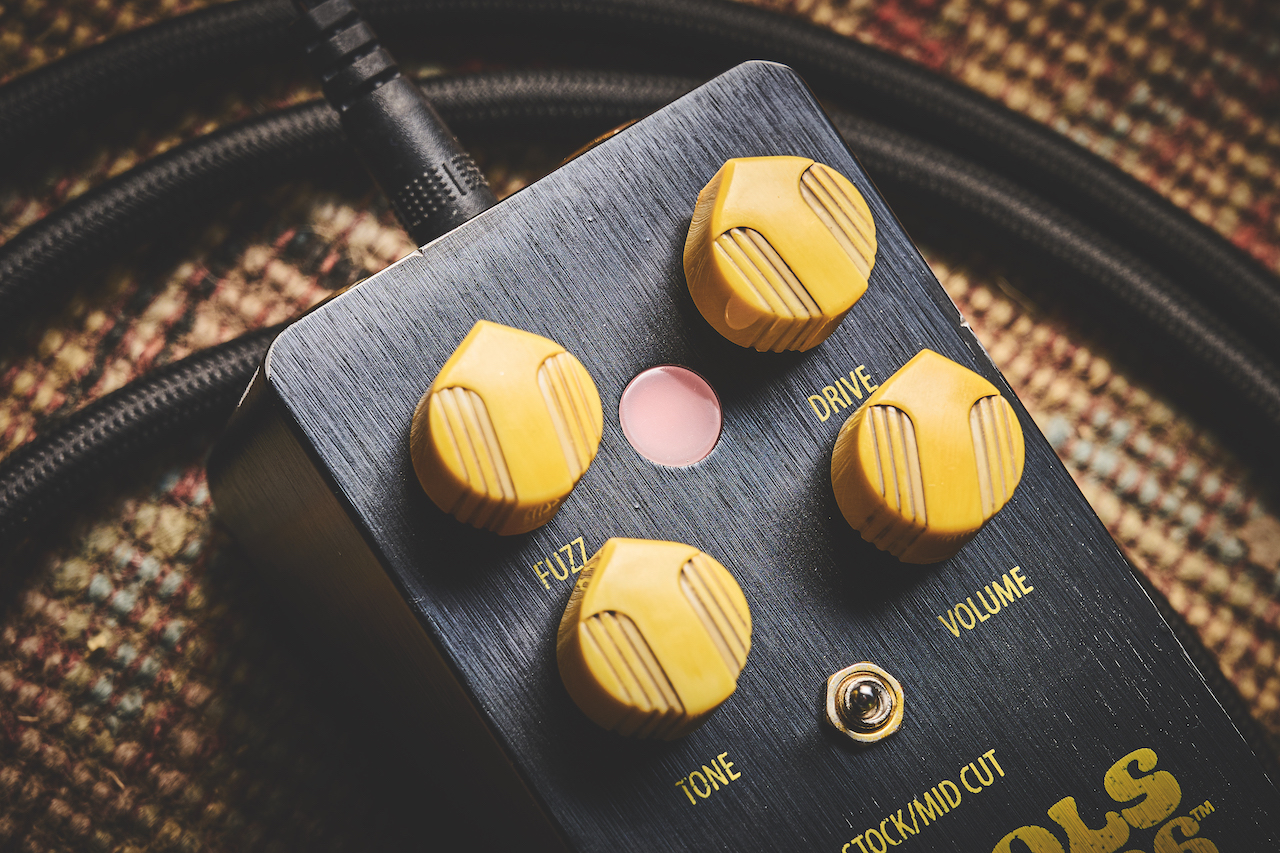
The dirt circuits are mostly independent too, so you can use one or the other if you wish to hear mainly fuzz or distortion. Either way, the sound is fullest when the knobs are at least a quarter way up or so.
Since a blend of the two distortion types best suited my ears, I found it good to start out with fuzz and drive about halfway up and take it from there, varying the ratios as needed to ultimately get distortion tones that were infused with this cool halo of fuzz – a sonic brew that’s easily zeroed-in for different guitars by adjusting balance and output levels, and using the tone control to shave off highs for a buttery tone that’s defined and well-presented.
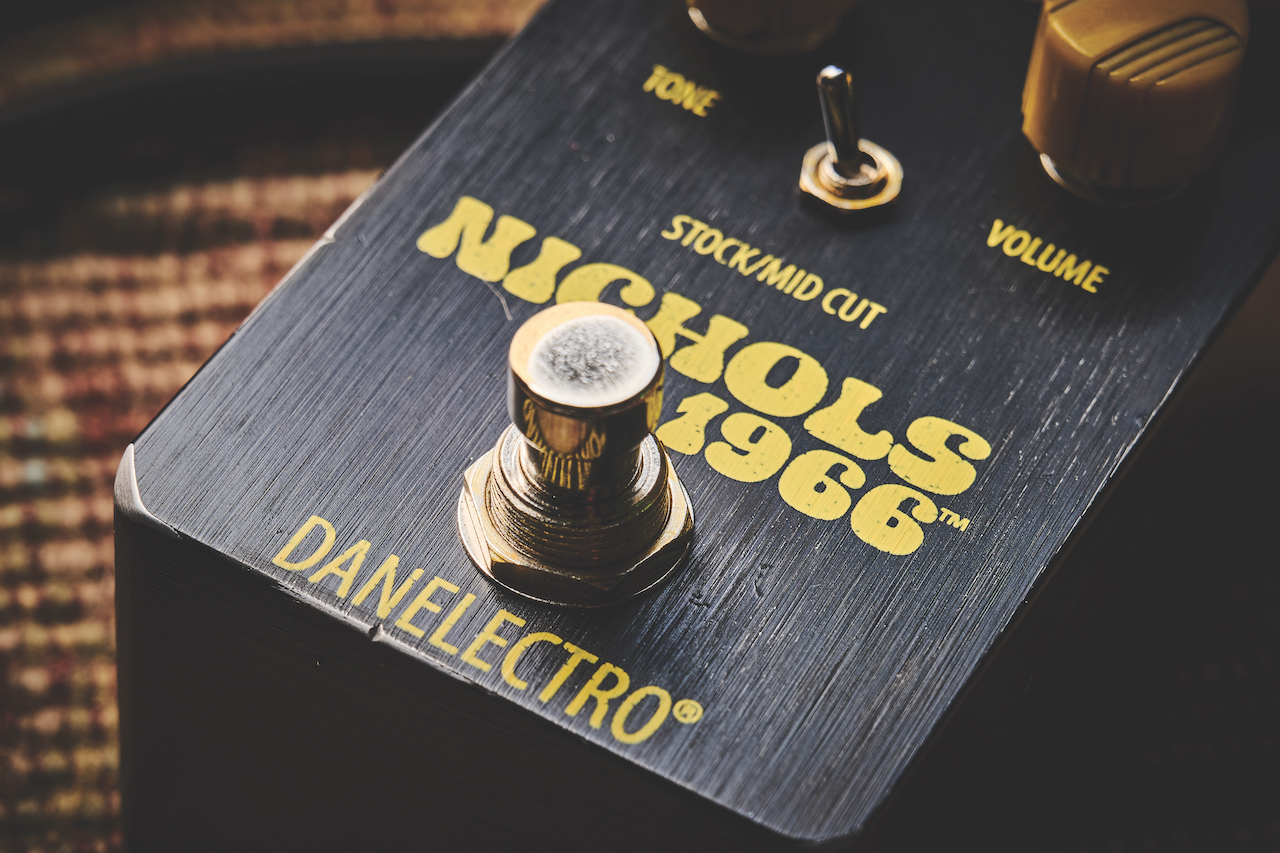
The compression is mild even at higher gain settings, and since this pedal doesn’t impart the midrange coloration you get from some classic ODs, the Nichols keeps the sounds of your guitars intact while running at distortion levels that you can control for lead and rhythm right from the guitar if you’re using it as an always-on affair.
Bottom line, the Nichols 1966 is a satisfying pedal that’s loaded with cool distortion textures, is a blast to play, and kind of inspiring in how it’s rooted in a place and time when the availability of grind pedals was limited, to say the least. Kudos to Steve Ridinger and his team for doing the detective work required to bring this long-lost treasure back to life.
Danelectro Nichols 1966 – Specifications
CONTACT Danelectro
PRICE $199
CONTROLS Fuzz, drive, tone, volume. Stock/Mid Cut switch
I/O Input, output, 9VDC power jack
FOOT SWITCH Mechanical, true bypass
EXTRAS Nifty-looking Deco-style knobs. LED bypass indicator. NOS transistors
SIZE 4.5” x 2.5” x 1.5” (LxWxH)
WEIGHT .54 lbs
BUILT China

Art Thompson is Senior Editor of Guitar Player magazine. He has authored stories with numerous guitar greats including B.B. King, Prince and Scotty Moore and interviewed gear innovators such as Paul Reed Smith, Randall Smith and Gary Kramer. He also wrote the first book on vintage effects pedals, Stompbox. Art's busy performance schedule with three stylistically diverse groups provides ample opportunity to test-drive new guitars, amps and effects, many of which are featured in the pages of GP.
